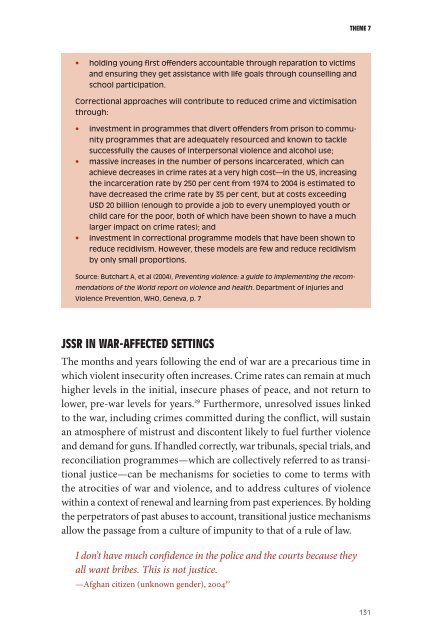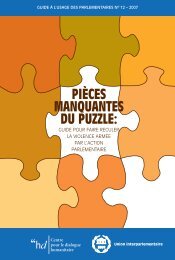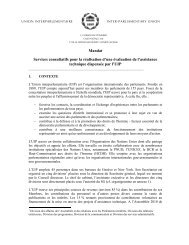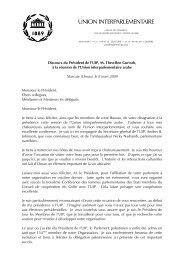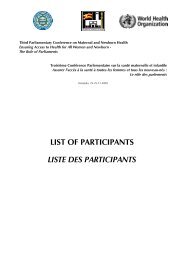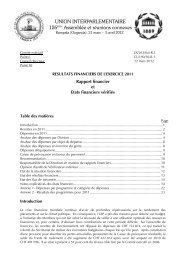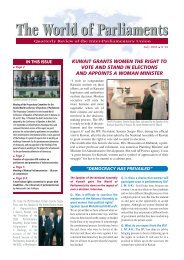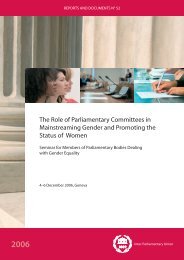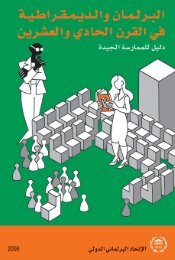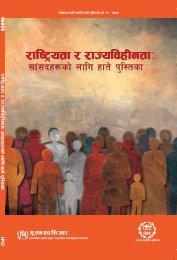MISSING PIECES - Inter-Parliamentary Union
MISSING PIECES - Inter-Parliamentary Union
MISSING PIECES - Inter-Parliamentary Union
You also want an ePaper? Increase the reach of your titles
YUMPU automatically turns print PDFs into web optimized ePapers that Google loves.
THEME 7<br />
• holding young first offenders accountable through reparation to victims<br />
and ensuring they get assistance with life goals through counselling and<br />
school participation.<br />
Correctional approaches will contribute to reduced crime and victimisation<br />
through:<br />
• investment in programmes that divert offenders from prison to community<br />
programmes that are adequately resourced and known to tackle<br />
successfully the causes of interpersonal violence and alcohol use;<br />
• massive increases in the number of persons incarcerated, which can<br />
achieve decreases in crime rates at a very high cost—in the US, increasing<br />
the incarceration rate by 250 per cent from 1974 to 2004 is estimated to<br />
have decreased the crime rate by 35 per cent, but at costs exceeding<br />
USD 20 billion (enough to provide a job to every unemployed youth or<br />
child care for the poor, both of which have been shown to have a much<br />
larger impact on crime rates); and<br />
• investment in correctional programme models that have been shown to<br />
reduce recidivism. However, these models are few and reduce recidivism<br />
by only small proportions.<br />
Source: Butchart A, et al (2004), Preventing violence: a guide to implementing the recommendations<br />
of the World report on violence and health. Department of Injuries and<br />
Violence Prevention, WHO, Geneva, p. 7<br />
JSSR IN WAR-AFFECTED SETTINGS<br />
The months and years following the end of war are a precarious time in<br />
which violent insecurity often increases. Crime rates can remain at much<br />
higher levels in the initial, insecure phases of peace, and not return to<br />
lower, pre-war levels for years. 29 Furthermore, unresolved issues linked<br />
to the war, including crimes committed during the conflict, will sustain<br />
an atmosphere of mistrust and discontent likely to fuel further violence<br />
and demand for guns. If handled correctly, war tribunals, special trials, and<br />
reconciliation programmes—which are collectively referred to as transitional<br />
justice—can be mechanisms for societies to come to terms with<br />
the atrocities of war and violence, and to address cultures of violence<br />
within a context of renewal and learning from past experiences. By holding<br />
the perpetrators of past abuses to account, transitional justice mechanisms<br />
allow the passage from a culture of impunity to that of a rule of law.<br />
I don’t have much confidence in the police and the courts because they<br />
all want bribes. This is not justice.<br />
—Afghan citizen (unknown gender), 2004 30<br />
131


